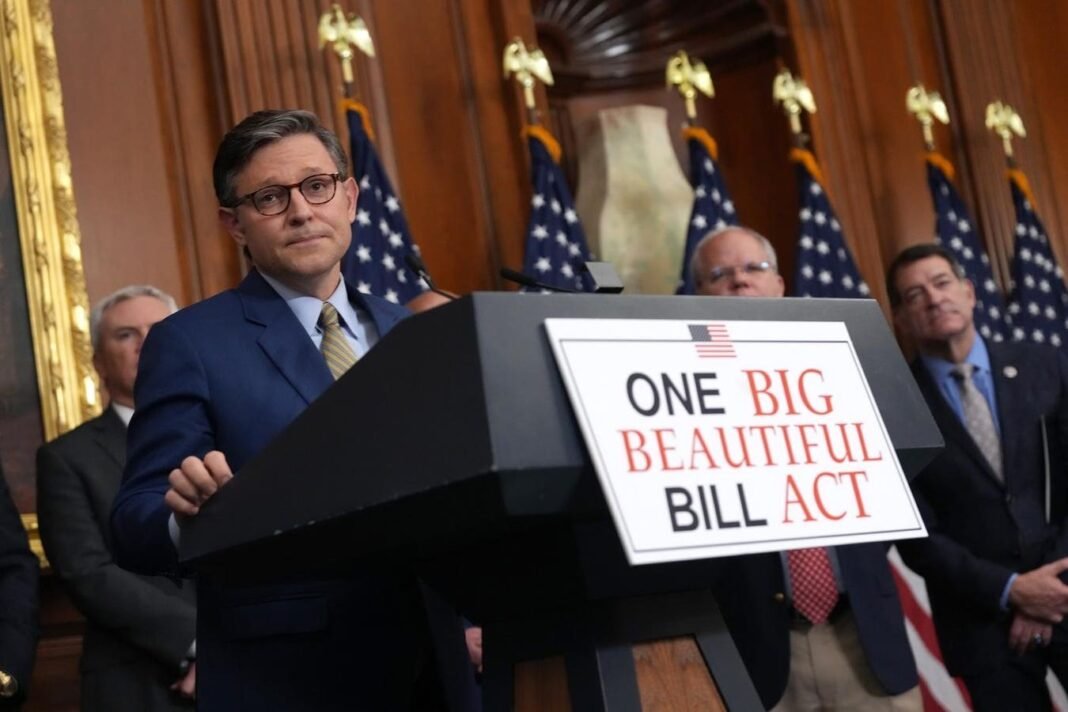Upcoming legislation Jeopardizes Affordable Repayment Options for Parent PLUS Loan Borrowers
Nearly four million borrowers with student loans are at risk of losing access to manageable repayment plans as Republican lawmakers advance reforms targeting loan repayment structures and forgiveness programs.
Understanding the Distinct Difficulties of Parent PLUS Loans
Parent PLUS loans, federal loans taken out by parents to finance thier undergraduate children’s education, have long offered fewer flexible repayment options compared to other federal student loans. Although the funds benefit the student, it is the parent who bears full legal obligation for repaying these debts. Current legislative proposals threaten to further limit affordable payment choices for approximately 3.8 million Parent PLUS borrowers by removing most income-driven repayment options currently available.
The Political Context Behind These changes
This reform effort is part of a broader Republican agenda using budget reconciliation procedures to push through policy priorities along party lines. These include extending significant tax cuts and cutting spending on domestic programs such as Medicaid and student loan forgiveness initiatives. The House has passed its version of this bill, with Senate leaders preparing for a vote soon; if approved, it could become law by mid-year.
The Fragile Safety net: Income-Driven Repayment Plans Under Threat
Most federal student loans qualify for income-driven repayment (IDR) plans that adjust monthly payments based on earnings and family size; however, Parent PLUS loans have traditionally been excluded from these programs. Since 2006, an exception has allowed borrowers who consolidate their Parent PLUS debt into Direct Consolidation Loans to access Income-Contingent repayment (ICR), though this plan often results in higher monthly payments than other IDR options.
For example, a parent carrying $150,000 in Parent PLUS debt earning $150,000 annually might face ICR payments exceeding $2,100 per month-often more costly than standard fixed repayments. Conversely, if that same borrower’s income falls sharply-to around $40,000 yearly-the ICR plan can reduce monthly payments dramatically from over $1,700 under standard terms down to roughly $405.
The GOP Proposal: Removing Crucial Protections From Parent Borrowers
The proposed legislation seeks to eliminate existing IDR plans including ICR as well as PAYE and SAVE-even affecting those currently enrolled-and replace them with a new program called the Repayment Assistance Plan (RAP). Parent PLUS borrowers would be completely excluded from RAP eligibility, even after consolidating their loans.
This exclusion means most Parent PLUS holders will lose not only income-based payment adjustments but also vital pathways toward loan forgiveness under both IDR frameworks and Public Service Loan Forgiveness (PSLF). Since PSLF requires qualifying payments made under approved IDR plans-which would no longer be accessible-these borrowers risk losing one of their few remaining relief options.
A Limited Grandfather Clause offers Minimal Protection
A key provision allows those who have already consolidated their Parent PLUS debts into Direct Consolidation Loans and are actively enrolled in ICR when the bill takes effect to transition into a modified Income-Based Repayment (IBR) plan-a program previously unavailable or unaffordable for many in this group but generally less expensive than ICR. Despite this concession,all other parent PLUS borrowers-including those using “double consolidation” strategies or enrolled in SAVE or PAYE-would lose access unless they switch before enactment.
Navigating Uncertainty: Practical Steps For Borrowers Today
- If you haven’t consolidated: Time might potentially be running out before potential July deadlines as consolidation typically takes one to two months processing time before applying for any IDR plan like ICR-and affordability remains questionable without significant income reduction.
- If you’ve consolidated but aren’t on ICR:You should consider applying now to switch onto ICR; however,a nationwide backlog exceeding 1.5 million pending applications means delays are likely-and high monthly costs may make it impractical without reduced earnings.
- If you hold double-consolidated loans enrolled in SAVE or PAYE:You face increased risk because these plans will also be repealed.You could attempt switching back onto ICR now-but given its expense and uncertain processing times there’s no guarantee it will happen quickly enough-or at all-possibly leaving you without any viable income-driven option after legislation passes.
The Wider Consequences Beyond Just parents’ Loans
This legislative overhaul threatens not only parents but also many other categories of student loan holders who may see higher required payments once new rules take effect. Advocacy groups urge all affected individualsto contact congressional representatives immediately while there remains an possibility to influence amendments or delay implementation timelines.
“These impending changes represent one of the most profound shifts in federal student lending policy seen recently-with millions potentially facing unaffordable repayments unless urgent action is taken.”





